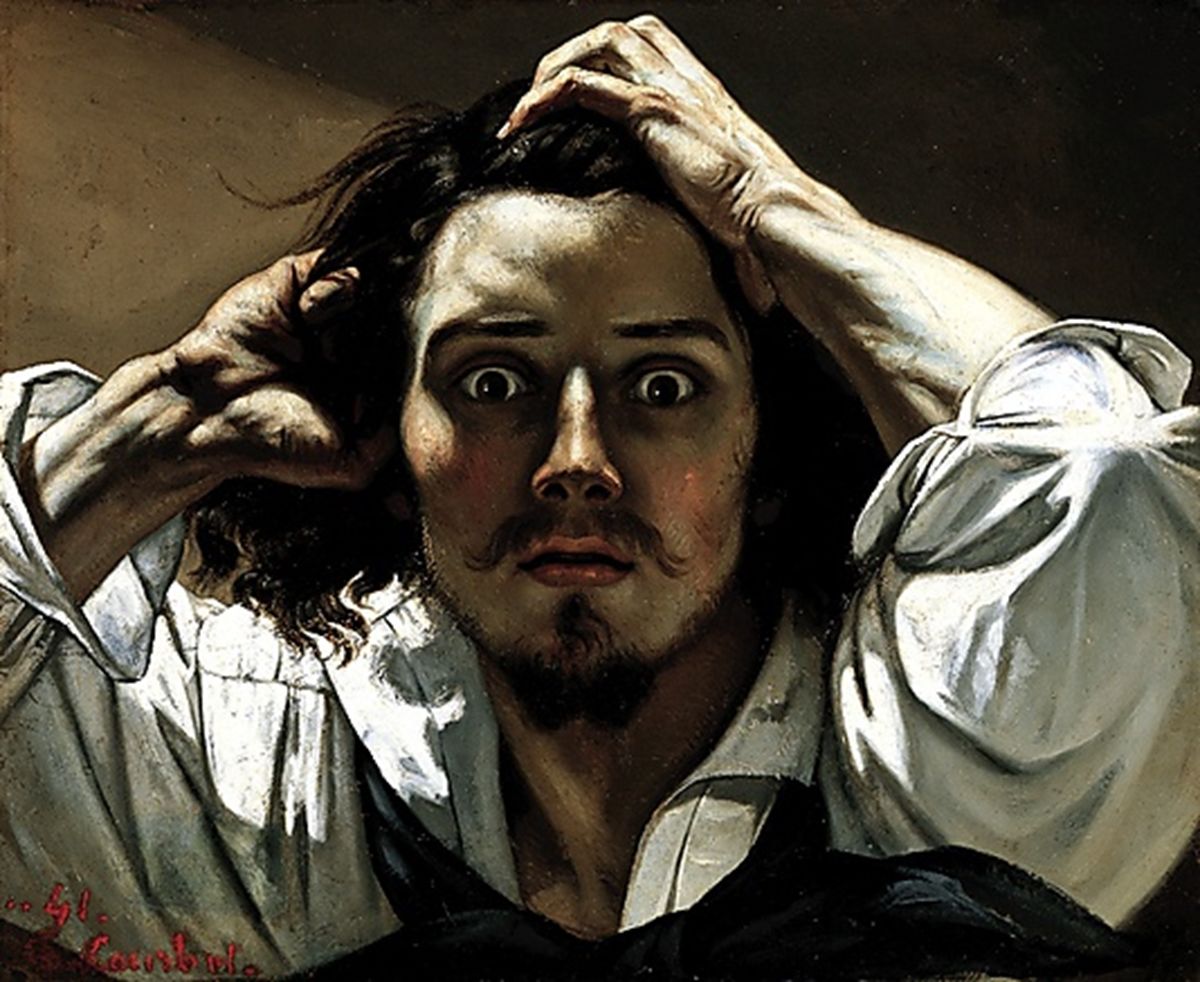Modern art can largely be traced back to the beginning of the Industrial Revolution, in the 19th century, when all these new technological advances, manufacturing, and better transportation allowed for greater urbanization and the spread of ideas. With all these advances, people's worldviews were broadened, and they had more time to explore new ways of expressing themselves through art. Artists no longer were simply employed by wealthy people or the church to depict realistic or religious stories, but people started to appreciate different ways of looking at the world according to the artist's individual outlook. This included Impressionism, often noted as the first "modernist" style, as most famously depicted by Monet.
 |
| Impressionism, Sunrise by Claude Monet, 1874, oil on canvas |
Monet focuses on the light and movement that he experienced in the moment of painting, a hallmark of the style that was unheard of, inspiring criticism at the time (as is the case with most new styles.)
Several other styles would follow as urbanization grew and artists began focusing on cities and common life as subjects. Realism was one such style, which aimed to depict people and places as they were with all their imperfections. Gustave Courbet is one example of a Realism artist.
 |
| Le Desespere by Gustave Courbet, 1845, oil on canvas, a self portrait |
Countless other named styles bloomed from these genres as technologies and advancements spread across the globe. Artists began depicting subjects in even more abstract ways, such as with Picasso's works and notably Duchamp's Fountain. Some art, such as Warhol's Marilyn Diptych, was used to depict images from the media. Many modern works of today have an underlying message pertaining to a social issue.
I was in New York this past summer, and though I didn't have a chance to visit the MoMA, I did go to the Whitney and the Brooklyn art museums, which have a large variety of stunning and thought-provoking modern works. This modern art explored different media, including film, audio, photography, using all sorts of materials like string across a room at specific angles, and every combination. Artists are exploring combining topics from other principles, such as math or science, and showing how they can be used to create art. The very concept of what is considered art is challenged. Some such examples I saw from the Whitney are depicted below.
| Sine Curve Man by Charles Csuri, 1967, ink on paper, outputted by a plotter |
| Five Words in Green Neon by Joseph Kosuth, 1965, neon tubing |
But what we associate with Contemporary Art nowadays may not always be known as "Modern Art." Perhaps in 50 years it will be called something else, categorized as its own genre in art history. Though we think of Modern Art as this foreign, avant-garde style, this is exactly what makes it so impactful: it's new. It's often uncomfortable. It's remembered. And isn't that every artist's ultimate goal?
Note: It should be noted that this is an extremely brief and narrow look at the history of Modern Art and what it is today. There are so many styles that were not explored, particularly from other parts of the world than Europe and North America, and from women. It is interesting that such works and artists are not as widely discussed in the sources I found searching for "Modern Art," but that is a topic for another day.
Sources:
https://www.moma.org/learn/moma_learning/themes/what-is-modern-art/
http://collection.whitney.org/object/57415
http://collection.whitney.org/object/8377
https://www.metmuseum.org/exhibitions/listings/2008/gustave-courbet
https://www.wikiart.org/en/gustave-courbet/the-desperate-man-self-portrait-1845
https://www.theartstory.org/definition-modern-art-artworks.htm#pnt_1
https://www.1st-art-gallery.com/Claude-Oscar-Monet/Impression-Sunrise.html
No comments:
Post a Comment